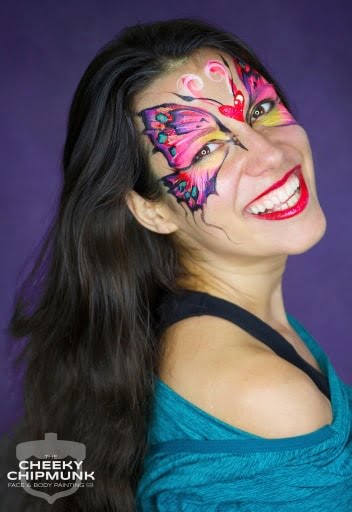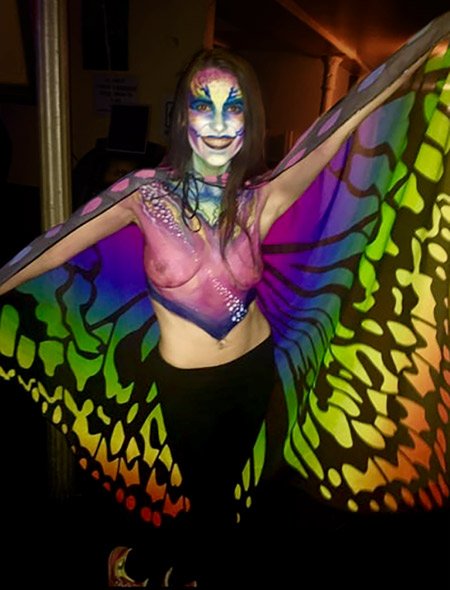Have you ever heard of flitting? No, not flirting. Flitting!
Flitting is a phenomenon often seen in (but is not necessarily exclusive to) autistic women; we have deep, meaningful connections in social situations, but we dart—like a butterfly flitting from one flower to the next—in and out of social situations. We look like we fit in, but we don’t; we look like we connect, but are left feeling alone.
A study from 2014 by Michelle Dean Lorenzini and Connie Kasari et al. looked at how autistic boys and girls interact with their peers on the school playground. The boys clearly stood out as being different; they were very isolated from the other boys, who were in a large group playing sports. The autistic boys were the ones circling the perimeter of the yard, or off by the tree in the back.[1]The peer relationships of girls with ASD at school: Comparison to boys and girls with and without ASD This is definitely what Martin was like as a kid.
The autistic girls, on the other hand, didn’t stand out as much; they stuck close enough to the other girls to look as if they were socially connected, but in reality, they were not really connecting. “They were not having deep, meaningful conversations or exchanges,” says Amanda Gulsrud, who develops school interventions based on the study.[2]‘Social Camouflage’ May Lead To Underdiagnosis Of Autism In Girls | NPR
They were flitting in and out of that social connection.

NB: Although flitting is more common among autistic women, it describes some autistic men (and obviously non-binary individuals) as well.
Camouflage
Flitting is one of many ways that autistic females socially camouflage; we blend into society better compared to autistic males, because as women, we’ve experienced more significant social pressure to mask our autistic symptoms to fit in. Or appear like we do, anyway.
Often when Martin and I are out, he will ask me what the purpose of a specific exchange was. For example, yesterday at the cash register, the young cashier asked me how my day was; I said “good” and asked her if she had the day off tomorrow (Thanksgiving Day), and whether she was celebrating with her family. She told me that she had been sick the day before, which was also her birthday and so she had laid in bed as her family celebrated Thanksgiving. I responded with support and empathy.
On our way out of the grocery store, Martin asked me what the point of that exchange was. I explained that it shows I care, which I do, and also the young cashier is practicing her social skills (she was slightly awkward, but did a pretty good job for fifteen-year-old). It also creates a situationship between us, which means in the future, she will have built a certain level of trust and liking of me.
Martin, on the other hand, tends to communicate with people only when there is something specific he wants to discuss, rather than engage socially. He doesn’t socially camouflage, so he sometimes stands out in social situations.
Situationships
These sorts of relationships/situationships are the types I find the easiest (besides my relationships with Martin and my son). Situationships allow my interactions to remain harmonious.
When Martin first moved to Canada to live with me, he began to interact with the neighbors. Not by choice, mind you. The neighborhood just started showing interest in us as a couple. I thought it resulted in potential friendships, but instead, in each situation, things became unharmonious. Some of this we described in the following post:
Here’s Dale!
Flitting ensures that I don’t get close enough to people to create friendships. I am good at flitting but lack the desire for longer-term relationships where I feel like I have to mask. And in my experience, masking is necessary to sustain relationships. The exceptions being my son and Martin.
Long-term friendships
Growing up, I moved a lot. I had taken 33 plane flights by the age of 13. Hong Kong, Japan, the US, South Africa, Canada, London… So the impacts of my flitting were not readily seen in social situations because I didn’t stay at one place long enough to have to maintain long-term friendships in the first place.
It was when I stayed in Canada that I could see the effects. I am well-liked in the short term, but in the longer term, I tend to get hurt and misunderstood by people. I get exhausted from the social mask I have to wear.
People like to get close to who they think I am. The Mask.
The mask is forever caring, wise, kind, empathetic, and nurturing. I am indeed those things, but the unmasked me also has needs, feelings, likes certain things, dislikes others. I have kept my own needs private as I have learned little by little who it is to be the kind of person that others want to be around.
I have always related to a Star Trek episode called The Perfect Mate, about the metamorph, who takes on the form of the desires of those around her.
She is an empathic metamorph who can sense
what males around her desire and react appropriately.
With Martin, from the beginning, he has been the only person where the metamorph would not alter, as the woman he wants her to be is who she actually is. With him, I can drop my mask and be myself.
Consequently, I nowadays flit only for brief periods in public. With Martin, I can rest and be liked for me; I can bare my soul.

Comments
Let us know what you think!